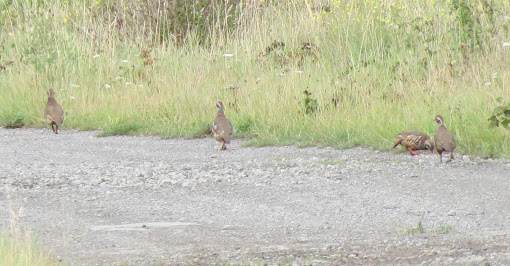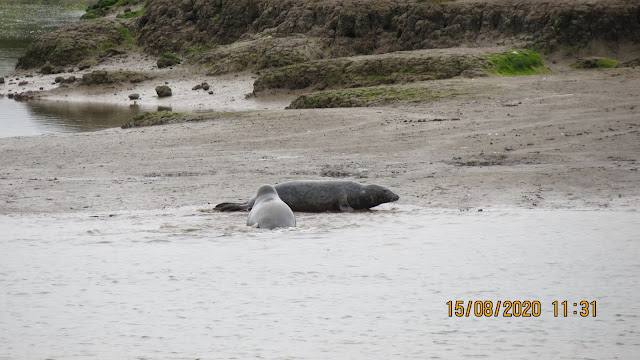The Common Blue (Polyommatus icarus) is a small butterfly of flowery grassland which can be found all over the British Isles, as well as east as far as northern China, south to North Africa. It even has populations on the Canary Islands.
The males are bright blue above, with white fringes, the undersides being a sort of beigey-grey with a scattering of black dots and a band of larger orange spots along the edges of the wings. The females look similar when viewed from below but the orange spots are also visible on the upperside of the wings. The rest of the upperwing in females is usually mostly brown with just a frosting of dark blue nearer to the body (as can be seen on the photo of the female, below), but occasionally the blue can reach as far as the orange spots.
There are several species of blue butterflies in the UK and they can be tricky to tell apart. Apart from Common Blue and the smaller Holly Blue, however, most are scarce or rare and restricted to specific habitats in southern England, particularly chalk and limestone downland.
Sites that have a lot of Birds-foot Trefoil, a pretty yellow flower in the Pea family, are likely to hold populations of Common Blue. This is because it is one of the main food-plants for the caterpillars of this species, and if you walk through these grasslands on a sunny day in summer you will probably see males defending territories against their rivals. The females can be harder to see, but if you observe a patch of Bird's-foot Trefoil for a little while you may well see one coming to lay her eggs on the leaves. Other plants in the same family are also used including the pretty pink-flowered Common Restharrow and one of our other spotlight species, Black Medick (Day 9 - Black Medick).
 |
| A fresh male Common Blue - North Ormesby, Middlesbrough, 4th June 2019 |
 |
| A female Common Blue - North Ormesby, Middlesbrough, 31st August 2020 |



























































